What do you treat?
| Blueprints feet Callus Children’s feet Corn Cracked Heels Diabetic foot care Felt technique French Pedicure Fungal nail Foot check Foot fungus Foot wart |
Gel nail Gorge Ingrowing toenail Long nails Medical taping Mycose Nail regulation Nail repair Nail bracket NCM gel lacquer Oncological foot care Ortheses |
Pact therapy Pressure relief Psoriasis nail Rheumatic foot care Risk foot Shoes (inspection & advice) Trauma nail Thick nail Verruca Wart |
NB. This page is under construction. If you have a problem with your feet that is not yet described here, please call me!
What do you treat?
|
Blueprints feet |
NB. This page is under construction. If you have a problem with your feet that is not yet described here, please call me!
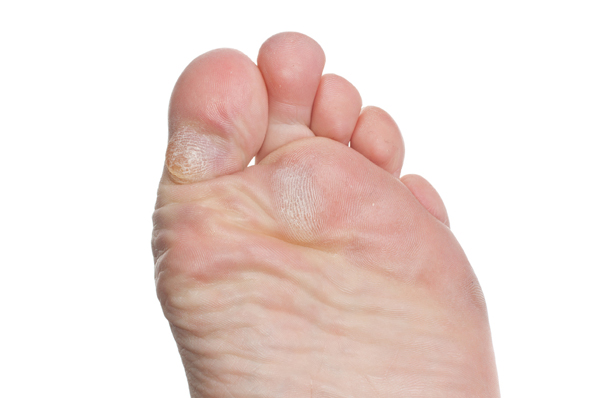
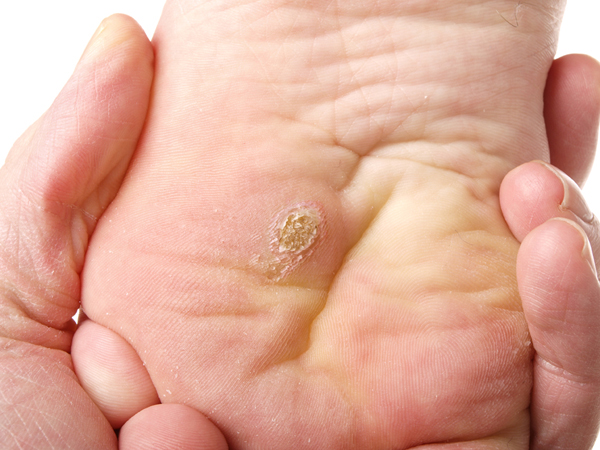
CALLUS AND CORNS
What is it?
Whenever friction, weight or pressure is exerted on the epidermis, the body protects it by thickening the corneous layer, the top layer of skin that consists of dead cells of the epidermis. A normal amount of callus on pressure spots is very normal, but too much callus on these points may lead to annoying symptoms.
A corn is more localized and is very concentrated point consisting of thick, hard, dead skin, usually located at a pressure point such as under a toe (known as hard corn). Corns can also develop between the toes due to moisture and friction from one toe to the other.
Why does it happen?
Calluses and corns are caused by a number of different causes, including improperly fitting socks and shoes or the wrong position of your feet.
What can you do about it yourself?
Ensure proper care of your feet. Buy socks and shoes that fit comfortably around your feet. Take care of your feet twice daily by rubbing them with a moisturizing cream that keeps the healthy callus supple. And very important … do not cut it or pick at it yourself!
What can I do for you?
I can professionally remove the excess callus for you. This means that I will leave a healthy amount of callus. Corns are of course completely removed immediately but, unfortunately, they usually come back. I will therefore try, together with you, to find the cause of the corn so that the corn and callus problem will be permanently resolved. It is also important that you bring along the shoes and socks that you wear most!

CRACKED HEELS
What is it?
Cracked heels consist of a thick layer of callus around the heels which quite literally cracked open, often all the way to the underlying skin layers.
Why does it happen?
Cracked heel often occur when the skin on your feet is too dry. This diminishes the elasticity which, in turn, means that the skin cannot bend under pressure and will then crack open. But you can also gert cracked heels when you, for example, walk on (badly fitting) flip-flops throughout the summer.
What can you do about it yourself?
Take good care of your feet and rub your feet at least twice a day with a good (preferably urea-containing) foot cream. Wear well-fitting shoes and socks. Do not start digging into deep cracks yourself, but leave those to a professional. Deep cracks are often very fragile at the bottom and very susceptible to, among other things, fungal infections.
What can I do for you?
I can remove the thick hard callus layer around the crack and make the gap as smooth as possible so that the skin bends again when put under pressure. I will subsequently treat your feet with special creams and/or masks especially for cracked heels to reduce the chance of it happening again.
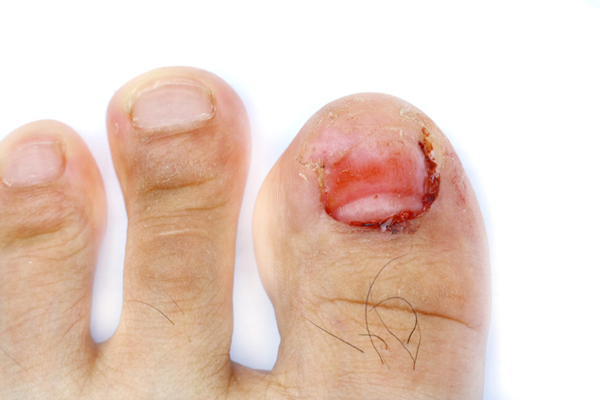
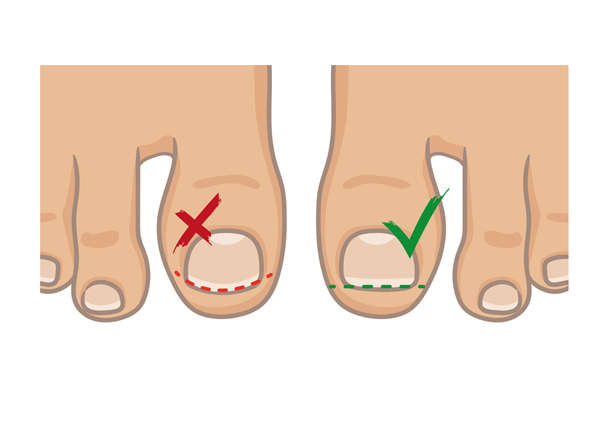
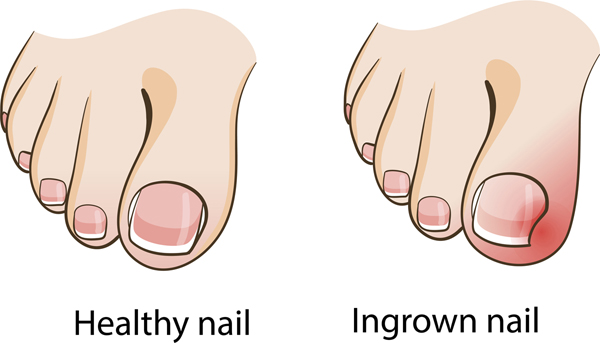
INGROWING TOENAIL
What is it?
An ingrowing toenail is a toenail that grows in the flesh of the surrounding tissue and causes an inflammation, redness and/or swelling of the tissue.
Why does it happen?
The most common causes of ingrowing toenails are shoes that are (too) tight, incorrect nail clipping, or congenital problems.
What can you do about it yourself?
Make sure you wear properly fitting shoes and socks and cut the nails of your toes straight. Therefore, use a nail clipper rather than a pair of scissors. And if you notice that the nail does not grow well, visit a professional so that they can strip the nail from its sides and clean the nail siedes properly, thus preventing a more serious infection.
What can I do for you?
I cut the nail loose from its side and ‘dig-up’ the part that causes pain and discomfort. I will free the nail and guide it away from the skin around it.
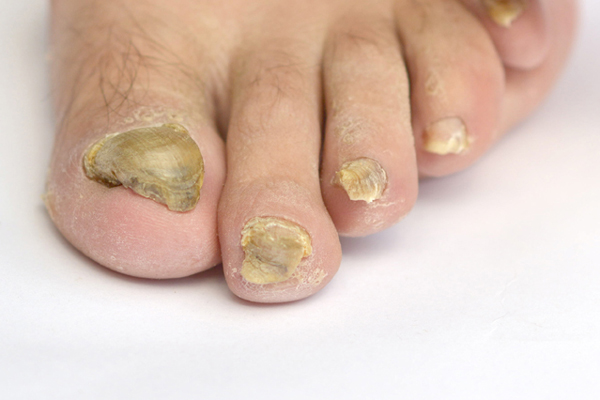
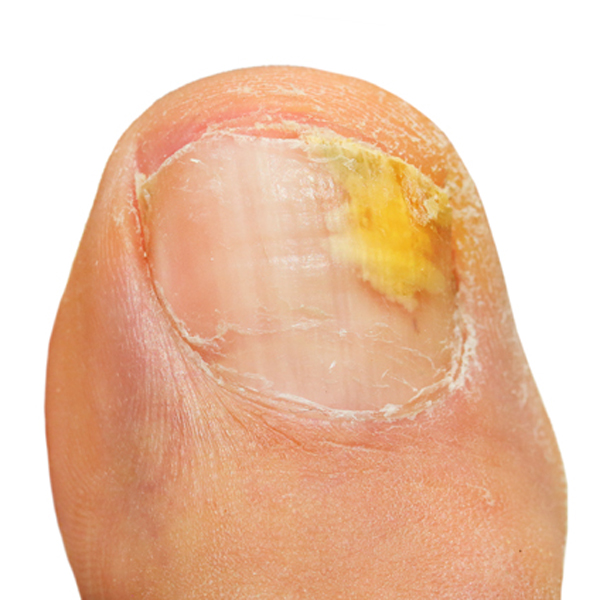
FUNGAL NAIL
What is it?
A fungal nail is a fungal infection of one or more nails of the feet (and/or the hands). Often the nails are thickened, discoloured and they can crumble when they are cut.
Why does it happen?
A fungal nail infection (or fungal nail as it is also called) is usually caused by the same fungus as athlete’s foot and is therefore also spread in the same way. Often the contamination is incurred in communal showers and swimming pools or similar humid environments. However, the fungal infection is very contagious, which means that not only the other nails can get infected quickly, but also everyone you come into contact with. Consider, for example, areas where you and your partner or other people are both barefoot.
What can you do about it yourself?
Make sure you walk on flip-flops in public areas, wash your feet daily but not with a lot of soap and always dry your feet so that traces of a fungus infection do not get a chance to thrive between the toes. And, preferably, do not wear nylons and or synthetic socks and shoes. If you think you already have a fungal infection on one or more toes, consider getting a professional examination and treatment as soon as possible.
What can I do for you?
The treatment will, largely, depend on how you treat your own feet during the process. I can mill your nail thinner so that the medicines (tincture, creams and drops) can reach the fungus directly and do their job better. But it is important that you take care of daily continuation of the treatment. So rub and/or drip the medicines yourself, that you wear clean socks and follow the guidelines for decontaminating socks and shoes. And, obviously, that you prevent the fungus to spread to your other nails or those of your housemates.
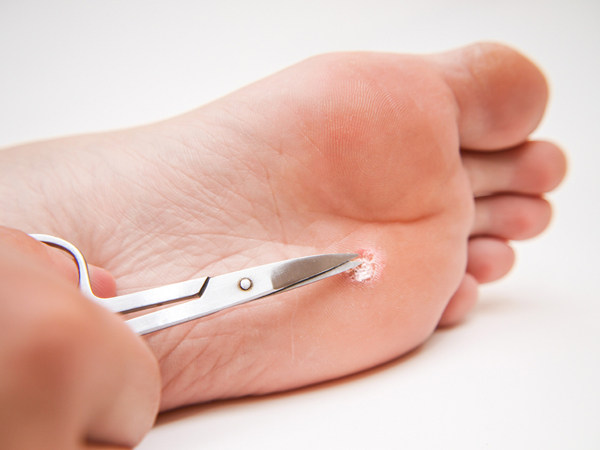
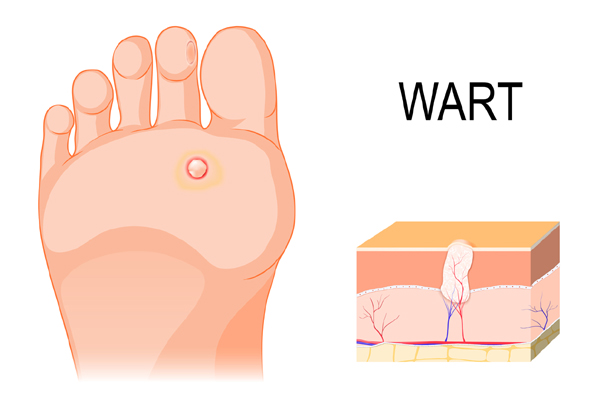
FOOT WARTS
What is it?
A wart is a hard, cauliflower-like deformation of the epidermis, sometimes with black spots in it. If you look closely at a wart, you will see that the striae (lines on the foot like a fingerprint) do not cross the surface of the wart and this makes them look slightly different than corns or callus. A wart can occur on its own or in a clump.
Why does it happen?
A wart is caused by the human papilloma (HPV) virus. HPV is transmitted through skin contact but also through moist surfaces of, for example, swimming pools, public changing rooms and bathing areas.
What can you do about it yourself?
Prevent barefoot walking through public places. Do not share socks, shoes or towels. If you have a wart yourself, treat it as soon as possible and in the meantime avoid infecting other people by sticking a plaster over the wart.
What can I do for you?
I remove the top layer of the wart and put a seal with salicylic acid ointment, a chemical product that sort of dissolves the wart. This treatment will need to be repeated for several weeks, depending on how big the wart is and how long you have had it. Eventually the wart becomes decreases in size until it is completely gone.